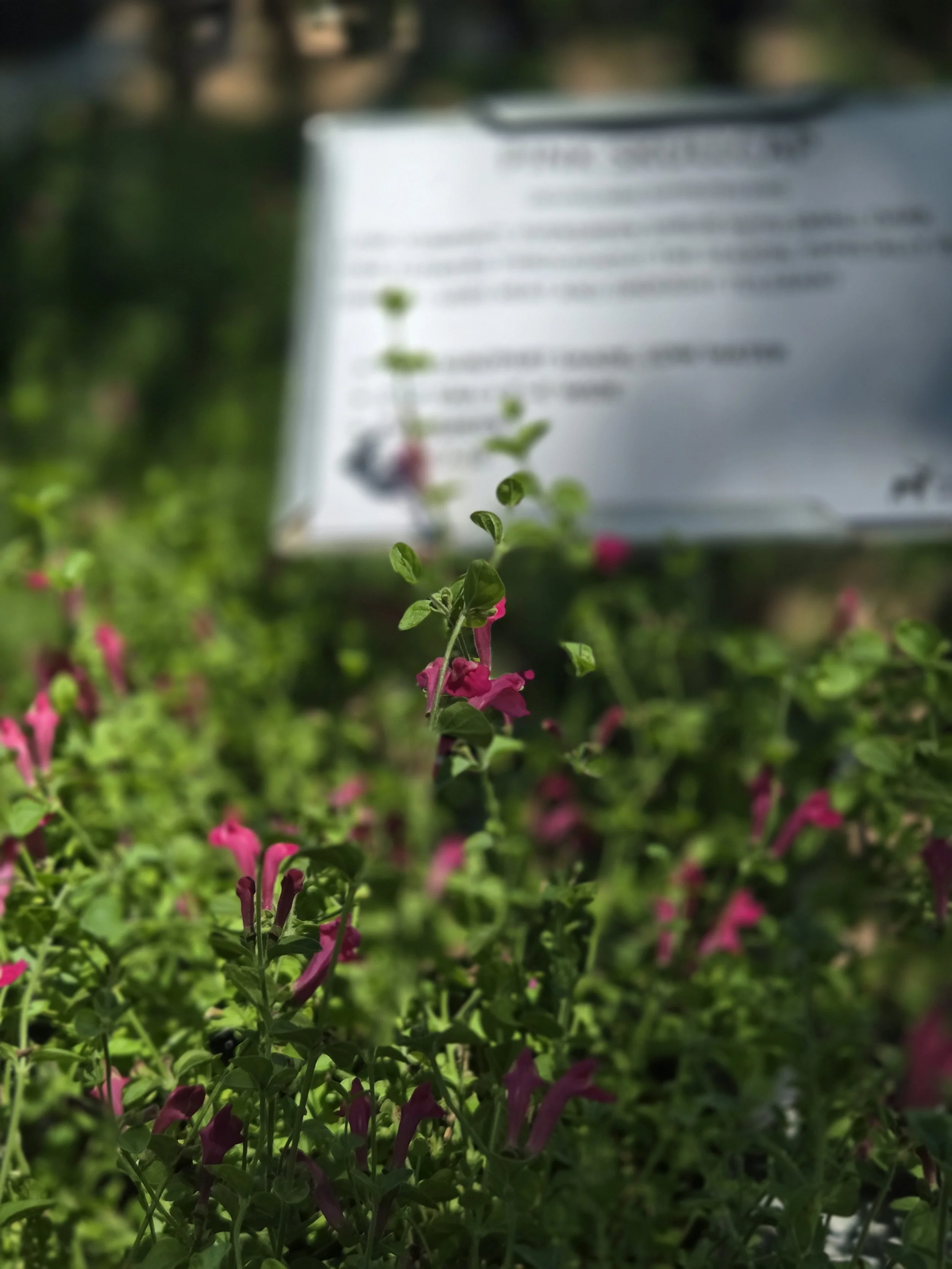August Newsletter
Morning walks
Morning walks before work are quiet in August - except for the rustling of the scarlet sage that jumped its boundaries, and Gimli’s nose tracking every hidden bloom and animal path. The wind’s been whispering from the west, carrying the soft rumble of hay grazer being turned. The native plants around Central Texas are stretching into fall with slow confidence. This month, I’m sharing our first ‘Sniff and Stroll’ wander, featuring links to local trails, a spotlight on a plant that caught my eye, and a few resources growing on my website, Dragon and Thistle. Whether you walk with a purpose or just pause beside a bloom, may the season great you gently.
🐾 Sniff & Stroll with Gimli
Yesterday’s walk through Booty Park came with surprises—Gimli had to dodge swarms of mosquitoes while the stream, usually a quiet backdrop, was roaring from floodwater released at Lake Georgetown Dam. The water cut across part of the trail, blocking our usual route and adding a low thunder that echoed through the canopy.
Still, nature had its say. Wild petunia (Ruellia humilis) bloomed defiantly among the debris, flashes of purple against the muddied ground. We also spotted white snakeroot (Ageratina altissima) thriving in the disturbed shade, its fuzzy blooms signaling the seasonal shift. Gimli didn’t linger long this time—just enough to sniff the snakeroot before moving briskly past the buzzing cloud.
🌿 Fieldnotes from the Kailyard: Fredericksburg Finds
This month’s garden adventure led me to Friendly Natives Nursery in Fredericksburg, where I fell in love with a new addition: Rattlesnake master (Eryngium yuccifolium). With spiky elegance and pollinator power (although it just looks like grass right now), it's the latest native to join my container gardening experiment. Pink skullcap, American beautyberry, and other plant friends made their way into my camera roll too—stay tuned as I share photos and insights on native plants thriving in small spaces.
Pink Skullcap
Pink skullcap is the plant equivalent of Ann Richards with attitude— they’re low-growing, drought-tough, and unapologetically pink from spring till frost. It thrives in neglect, parties with pollinators, and practically rolls its eyes at browsing deer. You plant it once, it whispers, “I’m ready to shake things up.”
🍹 Recipe of the Month
Blackberry-Lime Garden Water Infused refreshment straight from the backyard and the berry patch
Ingredients
1 cup fresh blackberries (local, if you’ve got ’em!)
2–3 slices fresh lime (ideally picked right from your tree)
24 oz cool still or sparkling water
Optional: Ice + sprig of mint, lemon balm, or thyme
Optional 2: A splash of herbal syrup or bitters for added depth
Directions Drop the blackberries and lime into a carafe or jar. Muddle gently to release juices (especially if you like stronger fruit flavor). Add water, then ice and herbs if using. Chill for at least 2 hours—or sip immediately and let the infusion deepen with time.
🌿 Add-Ons to Explore
Lemon Balm or Thyme – for a gentle herbal twist
Frozen Blackberry Ice Cubes – adds color and keeps things cool
Rosemary Bitters or Lavender Syrup – makes it mocktail-worthy
Chili-Lime Salt Rim – if you’re feeling zesty
🌱 Garden Wisdom & Workshop Corner
After yesterday's walk through Booty Park—with floodwaters rushing, mosquitoes swarming, and trail detours—I’ve been thinking about how native plants respond to disruption. White snakeroot (Ageratina altissima), blooming in the shaded chaos, reminded me that some species thrive in the aftermath, stabilizing soil and supporting pollinators when everything else feels unsettled.
It’s a subtle kind of resilience. The kind that doesn’t make a fuss, but quietly restores. As we ease into fall, this might be the best time to look for what’s quietly ready to anchor your garden
🌱 Community Roots
Resource Roundup
🌱 NICE! Native Plant Partners Looking for native plants grown with intention and ecological care? The Native Plant Society of Texas partners with dedicated nurseries across the state through the NICE! Native Plant Partner program. These nurseries specialize in regionally appropriate native species and work with local chapters to highlight seasonal standouts. Whether you're planting for pollinators, restoring habitat, or just adding Texas flair to your garden, NICE! nurseries are a trusted source. Explore the full list on the Native Plant Society website.
Community Invite Have a native plant you love? A question about your garden soil? Reply to this newsletter or tag me in a photo on IG or FB—I’d love to feature your observations in future editions.
Notes from the Kailyard


